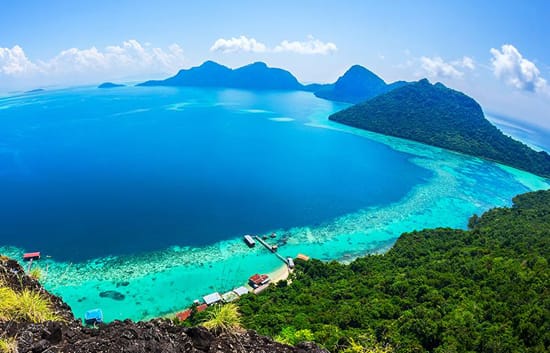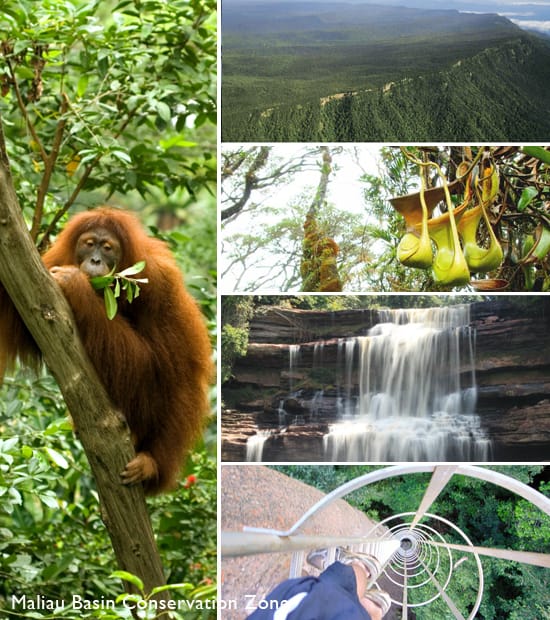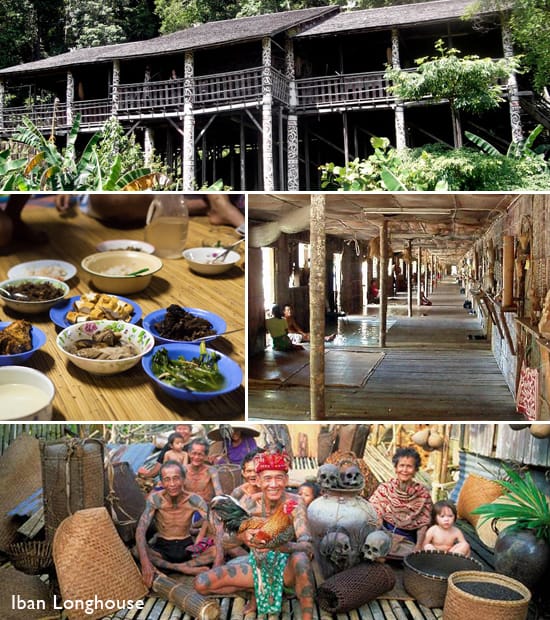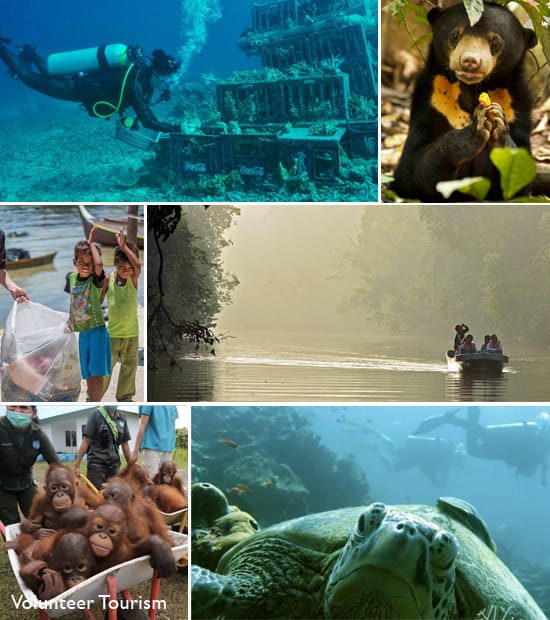Unique Ecotourism Activities & Destinations in Malaysia (Part 2)
Earth’s resources are only good for 2 billion people, the current count is 7.2 billion, using up 3 times our natural resources. But let’s cut the doom and gloom, we can still enjoy our holidays as we do our part – through eco-tourism.
In our last instalment on this topic, we explored the largest goat and sheep farm, the country’s only organic rice farm and the treasure of Royal Belum State Park.

Let’s visit Sabah and Sarawak – the tropical paradise of unspoilt rainforests and wonderland of fauna and flora. The only place on Earth where the Sumatran tigers, Orangutans, Pygmy elephants and Sumatran rhinos share the same land, where over 1700 species of the endangered Orchid thrive, where forests are as ancient as 130 million years old. Here is also where we can visit indigenous people of a headhunter ancestry, stay and learn with them in their famed longhouses.
♦ ♦ ♦ ♦ ♦ ♦
Off the beaten track in Sabah's Lost World
The Maliau Basin Conservation Zone is one of the very few places on the planet that is still virtually untouched.
Located in the south of Sabah, encircled by two buffer zones and an enclave of cliffs, lies the bowl-shaped Maliau which sprawls about the size of Singapore. This little-explored pristine self-contained ecosystem holds a fabulous wealth of biodiversity. Explorers attest to an unusual array of forest-types populated by giant trees with massive trunks, the highest number of waterfalls in one area, the amazing nesting of 26% of ‘threatened’ birds (listed by the World Conservation Union), frogs that live inside pitcher plants, fossilized marine gastropods biodating 16 million years old… the list goes on – heaven for those ‘truly geeky at heart when it comes to nature’.
Maliau is not for the faint-hearted. Its remote location requires the use of 4X4 vehicles, accompanying forest ranger, nature guides, porters and a travel insurance to cover the contingency of helicopter evacuation. Good physical fitness is needed to trek the 70km of marked trails of just 25% of mapped area. With no record of permanent human residency, amenities are raw and rudimentary. So, be prepared to travel like Indiana Jones. At the end of it, you will be one of the fair few to boast about an experience in a one of a kind Class 1 Protected Forest Reserve!
Since its discovery in the 1940s, conservation initiatives have been on-going to better understand, preserve and prevent exploitation. Researchers are encouraged, “House Rules” implemented, UNESCO recognition being pursued. Check www.maliaubasin.org for more information.
The Maliau is the nature explorer’s dream, the wildlife-lover’s sanctuary, an eco-warrior’s home from home. For the rest of us, the less intrepid do-gooders, it is a chance to embrace nature as we learn and be empowered to make positive changes.

Sleep with headhunters in Sarawak
The Ibans were the most feared headhunters in Sarawak. Headhunting, originally part of religious practices, became a fad for status symbol and power in the 1800s. Heads were decapitated, brought home to be smoked and preserved, then worshipped for ‘return’ blessings and favours. Skull trophies lost their popularity when the Christian missionaries mass-converted successfully. Then, the White Rajah took rule and outlawed headhunting. That ended the headhunting era. Nowadays, the Ibans are a peaceful, gentle and generous people populating 30% of Sarawak’s population.
Sarawak is famous for longhouses homestays, which play a big part in its eco-tourism. The tourism income helps to improve the communities' standards of living.
The longhouse is a single-storey stilted structure built to fit communal living. When a new family joins, the length is simply extended. It is at least 50m long, made from patches of wood, timber and thatch, supported by time-tested planks for floorboards, containing over 20 rooms for the same number of families, who all share a simple hut for toilet and a hose for showers. Centuries of isolated huddling survival in the raw environment makes privacy a nonentity.
To experience tribal life and its ritualistic practices, a homestay often includes: Sharing a frugal tribal meal. Hunting with blowpipes. Dancing the Ngajat (the effortless flight of the hornbills). Toasting in celebration with tuak (an alcohol-distilled rice wine). Working the vegetable plot (often allocated to the families on a lottery system). Listening to enthralling tales of the skull trophies. Enjoy the experience but always remember to “...let the chief sit, eat, and drink first” because he is the boss!
The longest longhouse (construction) in Sarawak is possibly the Belor Leo Dian Longhouse (under the auspices of Sungai Asap Resettlement Scheme and the MInistry of Tourism). It links seven blocks to provide occupation space for 101 families (about 700 people). For immersive experience, longhouses in remote locations are more authentic (visits by invitation only). The less-touristy longhouses can be found in the areas of Batang Ai, Batang Skrang, Batang Lemanak and by the Batang Rejang river.

Get your hands dirty in Borneo
Visit a national park and pay the entry fees to go towards the park’s conservation efforts. Buy a weaved basket at a homestay and (part of) that money goes to wiring up the longhouse of 30 families with electricity. Pay to hug an orangutan and you pay for… BUT:
How about volunteering at a haven for mistreated sun bears, which saves the animals from abusive captivity, help feed and rehabilitate the animals and become a part of this incredible journey of rescue and rehabilitation?
How about spending 4 days monitoring turtles hatch, measuring the eggs, go snorkling in between, return to help implement a protection programme, then go off to explore the island at Talang Talang Turtle Conservation?
Volunteer tourism (a.k.a voluntourism) takes eco-tourism a step further. The traveller goes to places behind-the-scenes, meets like-minded people, gets to stay with host families, tours with local guides. You get to see the world authentically and (often) do it cheaper. In return, all you have to do is help build a better planet for the next generations!
How about living on a tropical beach to help with beach and reef conservation, venturing to build fresh water wells for the remote communities while you learn about jungle survival skills?
How about volunteering with the family in-tow? Visit the Sukau Village, live with the People of the River, work with the tribes to restore a fragmented forest and get involved in rehabilitation and education programmes?

♦ ♦ ♦ ♦ ♦ ♦
You can still have a great holiday when you make ‘green’ your new black!

Are You Ready for a Really Spooky Staycation?
on Wed 24th October 2018

7 Smart Ways to Save on your Gym Membership
on Tue 18th July 2017

5 Reasons Why We Love the Redmi 4A
on Wed 15th March 2017





